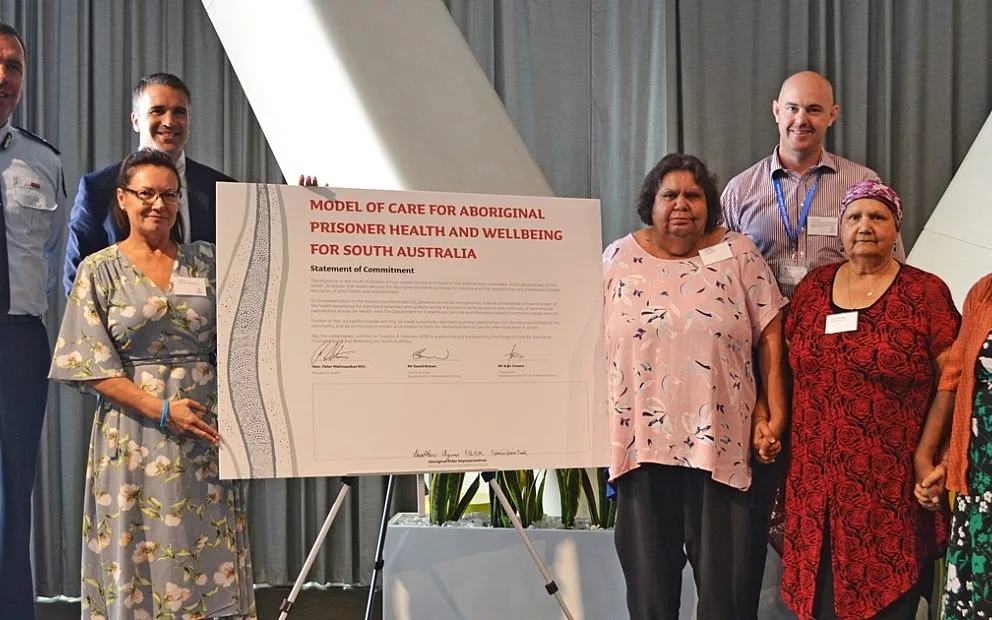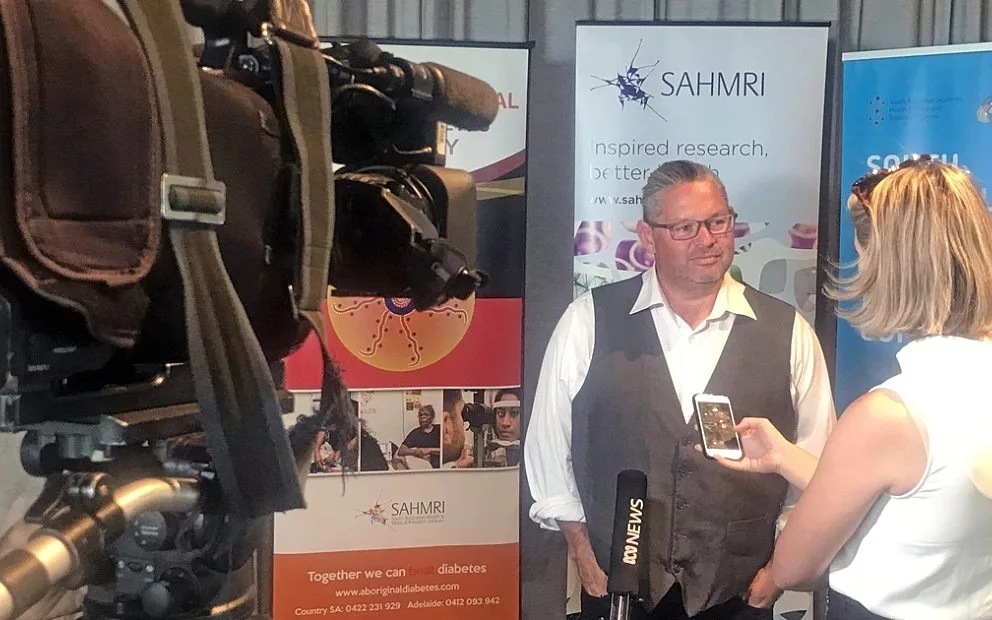A new Model of Care for Aboriginal Prisoner Health and Wellbeing in South Australia was officially launched at SAHMRI on Tuesday, 6 February 2018.
The Model of Care sets out the principles and practices needed to ensure culturally appropriate, holistic and safe healthcare in the state’s prison system for the significant population of Aboriginal prisoners. The focus is on building the system within prisons that effectively identifies and treats acute and chronic conditions that often compound disadvantage and potentially compromise successful rehabilitation and release.
An important component of the Model of Care is to enhance the skills, knowledge and understanding of corrections and prison health staff, to ensure delivery of culturally safe services that meet the health and wellbeing needs of Aboriginal prisoners.
The Model of Care for Aboriginal Prisoner Health and Wellbeing in South Australia is underpinned by research conducted by the Wardliparingga Aboriginal Research Unit in the South Australian Health and Medical Research Institute (SAHMRI). The Model of Care was developed in collaboration with the Department of Health, the Department for Correctional Services, non-government organisations and, importantly the Aboriginal community.
Why the need for a new Model of Care?
Aboriginal people are over represented in South Australian prisons, making up 23 per cent of the overall prisoner population on any given day, despite representing about 2 per cent of the Australian population. Aboriginal prisoners have complex health needs and face challenges that can impact on their rehabilitation, and long-term health and wellbeing.
Nationally, just over three quarters of Aboriginal prisoners had been previously imprisoned under sentence (76 per cent, compared with 49 per cent for non-Indigenous prisoners), which reinforces the need for better pre-release planning and post-release care for Aboriginal people. This stark reality is why the model emphasises pre-release planning commencing right from entry into prison and the strengthening of links with community-based services prior to release. Implementing the recommendations of this model will also assist the State in its goal of reducing reoffending by 10 per cent by 2020.
Professor Alex Brown, SAHMRI’s Aboriginal Health Theme Leader, said that the Aboriginal community considers prisoner health and wellbeing a high priority issue, given the large numbers of Aboriginal people in the prison system, and that so many families are affected.
“This Model of Care is aimed at bringing about major change in the prison system. Aboriginal people often enter prison with an existing set of health conditions, some quite serious, but often undetected or poorly managed. Prison is a chance to focus attention on managing both the physical and psychological health issues for people. The likelihood that people will be able to participate in rehabilitation and be well-prepared for release will improve if they are well while in prison and they can transition out into the mainstream community and health care system seamlessly,” Professor Brown said.
“There will be some challenges to implementing the Model of Care, but there is good support from senior corrections and health personnel to make this work and make a difference to the lives of Aboriginal people in prison, and importantly, their families who wait for their release."
A statement of commitment was signed by the South Australian Minister for Health, the Honourable Peter Malinauskas, Chief Executive for Department of Corrections, Mr David Brown, and a representative of Elders past and present of the Aboriginal community, Mr Kurt Towers, which acknowledges the importance of the work and combined support for its implementation.


